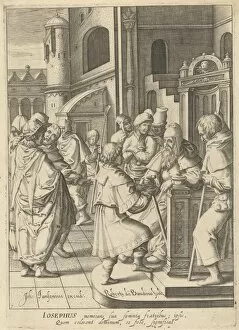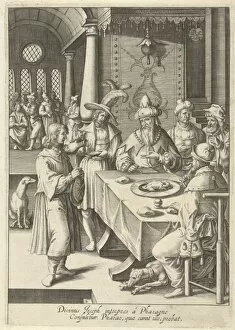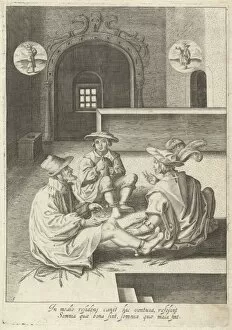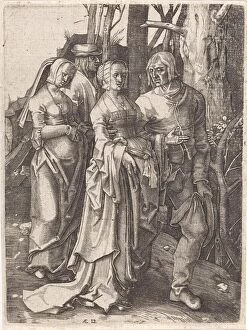Lucas Van Leyden Collection (page 8)
Lucas van Leyden: A Master of Dutch Art Lucas van Leyden, a renowned Dutch artist and engraver, left an indelible mark on the art world with his exceptional talent
All Professionally Made to Order for Quick Shipping
Lucas van Leyden: A Master of Dutch Art Lucas van Leyden, a renowned Dutch artist and engraver, left an indelible mark on the art world with his exceptional talent. Born in 1494 in Leiden, Netherlands, Lucas displayed prodigious skills from a young age. One of his notable works is "Salome with the Head of John the Baptist" created in 1514. This painting showcases Lucas' ability to capture intricate details and emotions. The intensity of Salome's gaze combined with her delicate yet sinister pose creates a captivating image that lingers in one's mind. In 1530, Lucas painted "Temperance, " showcasing his versatility as an artist. This piece depicts a woman pouring water into wine, symbolizing moderation and self-control. Through skillful brushwork and subtle use of colors, Lucas conveys the importance of balance and restraint in life. Another masterpiece by this talented painter is "Adoration of the Magi" from 1513. In this work, Lucas portrays the biblical scene with meticulous attention to detail. The richly adorned figures surrounding baby Jesus exude awe and reverence while conveying their individual personalities through facial expressions. Not limited to religious subjects alone, Lucas also excelled at portraiture as seen in his depiction of Maximilian I from 1520. With remarkable precision, he captures every wrinkle on Maximilian's face along with regal attire befitting an emperor. "Cain Killing Abel, " painted in 1524, reveals another facet of Lucas' artistic prowess - his ability to depict dramatic narratives. The intense struggle between Cain and Abel is rendered vividly through dynamic composition and expressive gestures. Apart from paintings, Lucas was also skilled at etching and engraving techniques as evident from his self-portrait dating back to 1817. His mastery over these mediums allowed him to create intricate designs that showcased both technical finesse and artistic vision.















